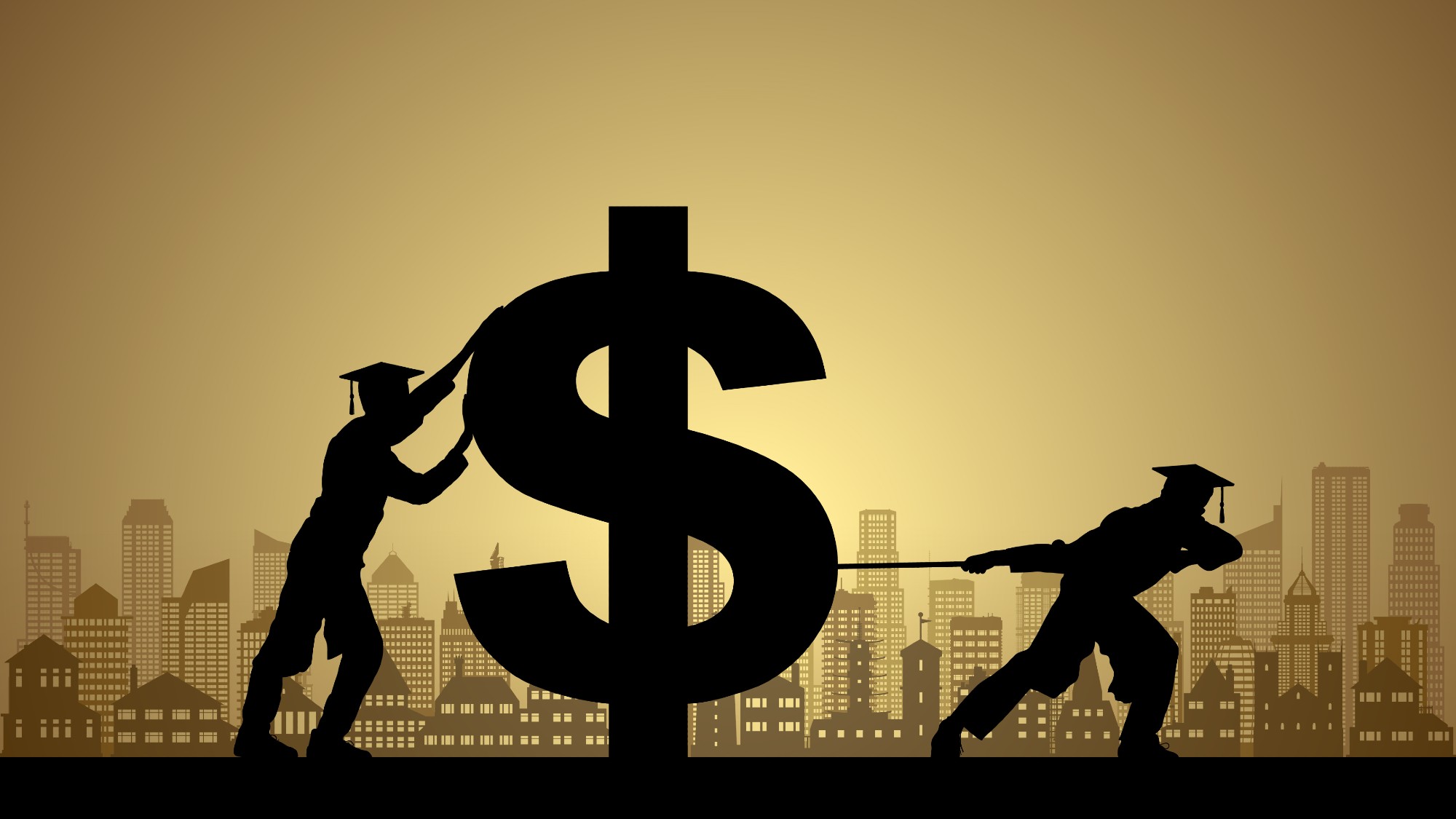The sudden reversal of economic confidence
The partisan divide in consumer expectations has stunned economists. Here's what you need to know.

The smartest insight and analysis, from all perspectives, rounded up from around the web:
The latest jobs numbers are in and they're "surprisingly lackluster," said Jim Puzzanghera at the Los Angeles Times. The economy added just 98,000 new jobs in March, "a little more than half of what economists had expected." Analysts blamed severe winter weather in the Northeast for pushing job growth down to the lowest level in nearly a year. "But there also was some good news." The unemployment rate fell to 4.5 percent, "its lowest level in nearly a decade," and wages continued to show solid growth. Democrats pooh-poohed the jobs numbers as "disappointing," said Danny Vinik at Politico. But it wasn't that long ago that Democrats were defending similar reports. "It's not hard to decipher" what's changed since then: "Barack Obama left the White House, and Donald Trump entered it."
Data like unemployment, inflation, and consumer spending are increasingly becoming political "Rorschach tests," said Nelson Schwartz at The New York Times, "with Republicans convinced that a boom is at hand, and Democrats foreseeing an imminent recession." Before the election, in October, the University of Michigan's consumer expectations index was at 61.1 among Republicans, "the kind of reading typically reported in the depths of a recession." Democrats, on the other hand, notched an optimistic 95.4 reading. By March, Republicans' expectations had soared to 122.5, "equivalent to levels registered in boom times," while Democrats "were even more pessimistic than Republicans had been" in the fall. The sudden reversal has stunned economists. "We've never recorded this before," said Richard Curtin, who directs the University of Michigan's survey. "The partisan divide has never had as large an impact on consumers' economic expectations."
The Week
Escape your echo chamber. Get the facts behind the news, plus analysis from multiple perspectives.

Sign up for The Week's Free Newsletters
From our morning news briefing to a weekly Good News Newsletter, get the best of The Week delivered directly to your inbox.
From our morning news briefing to a weekly Good News Newsletter, get the best of The Week delivered directly to your inbox.
But then rarely have economic indicators "sent such mixed signals," said The Economist. "Soft" data like business and consumer confidence are surging, while some "hard" economic data are not particularly impressive. The Atlanta Federal Reserve, for example, put annualized growth in the year's first quarter at a sluggish 1.2 percent, far short of President Trump's wildly ambitious promise of 4 percent. Industrial production is flat, and "banks have slowed business lending dramatically." Despite all that, the stock market is up 10 percent since the election. But if Trump isn't able to deliver on his promises of tax cuts and deregulation — an open question after the failure of the health-care reform bill — "the economic elation may subside."
In the meantime, jobs number are the wrong ones to focus on "at this stage of the recovery," said Neil Irwin at The New York Times. "When the economy is at risk of falling into a recession or struggling to grow out of one, the change in the jobs numbers really is the best single number to understand the state of the economy." But now that we're near full employment, other data points, like wage growth, are far more useful. March wages were strong, but after years of sluggish gains, "there's plenty of room" for pay to rise further. Then there's the employment-to-population ratio, which rose from 78.3 percent to 78.5 percent in March for workers between 25 and 54. That's progress, but still below its most recent high of 80.3 percent in 2007. The numbers still matter, but we have to pay attention to the right ones.
A free daily email with the biggest news stories of the day – and the best features from TheWeek.com
-
 Antibiotic resistance: the hidden danger on Ukraine’s frontlines
Antibiotic resistance: the hidden danger on Ukraine’s frontlinesUnder The Radar Threat is spreading beyond war zones to the ‘doorstep’ of western Europe
-
 ‘Capitalism: A Global History’ by Sven Beckert and ‘American Canto’ by Olivia Nuzzi
‘Capitalism: A Global History’ by Sven Beckert and ‘American Canto’ by Olivia NuzziFeature A consummate history of capitalism and a memoir from the journalist who fell in love with RFK Jr.
-
 Who will the new limits on student loans affect?
Who will the new limits on student loans affect?The Explainer The Trump administration is imposing new limits for federal student loans starting on July 1, 2026
-
 The pros and cons of noncompete agreements
The pros and cons of noncompete agreementsThe Explainer The FTC wants to ban companies from binding their employees with noncompete agreements. Who would this benefit, and who would it hurt?
-
 What experts are saying about the economy's surprise contraction
What experts are saying about the economy's surprise contractionThe Explainer The sharpest opinions on the debate from around the web
-
 The death of cities was greatly exaggerated
The death of cities was greatly exaggeratedThe Explainer Why the pandemic predictions about urban flight were wrong
-
 The housing crisis is here
The housing crisis is hereThe Explainer As the pandemic takes its toll, renters face eviction even as buyers are bidding higher
-
 How to be an ally to marginalized coworkers
How to be an ally to marginalized coworkersThe Explainer Show up for your colleagues by showing that you see them and their struggles
-
 What the stock market knows
What the stock market knowsThe Explainer Publicly traded companies are going to wallop small businesses
-
 Can the government save small businesses?
Can the government save small businesses?The Explainer Many are fighting for a fair share of the coronavirus rescue package
-
 How the oil crash could turn into a much bigger economic shock
How the oil crash could turn into a much bigger economic shockThe Explainer This could be a huge problem for the entire economy